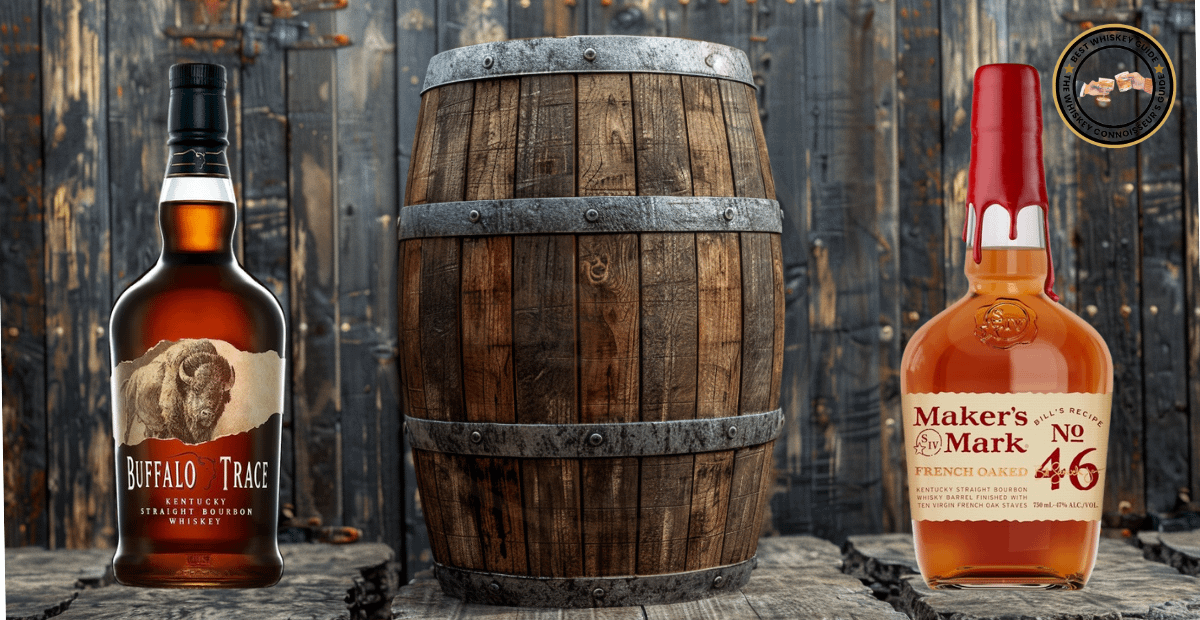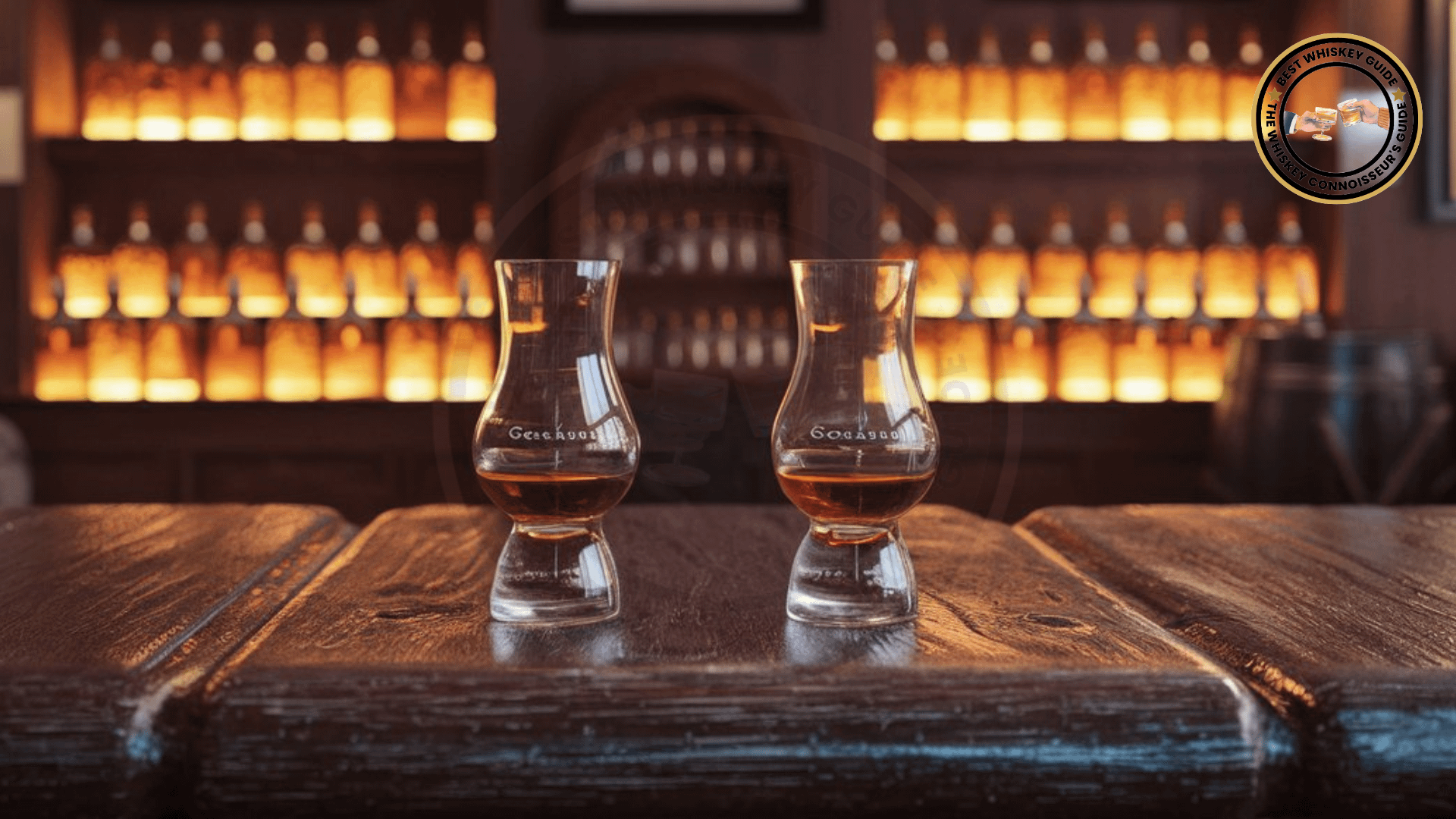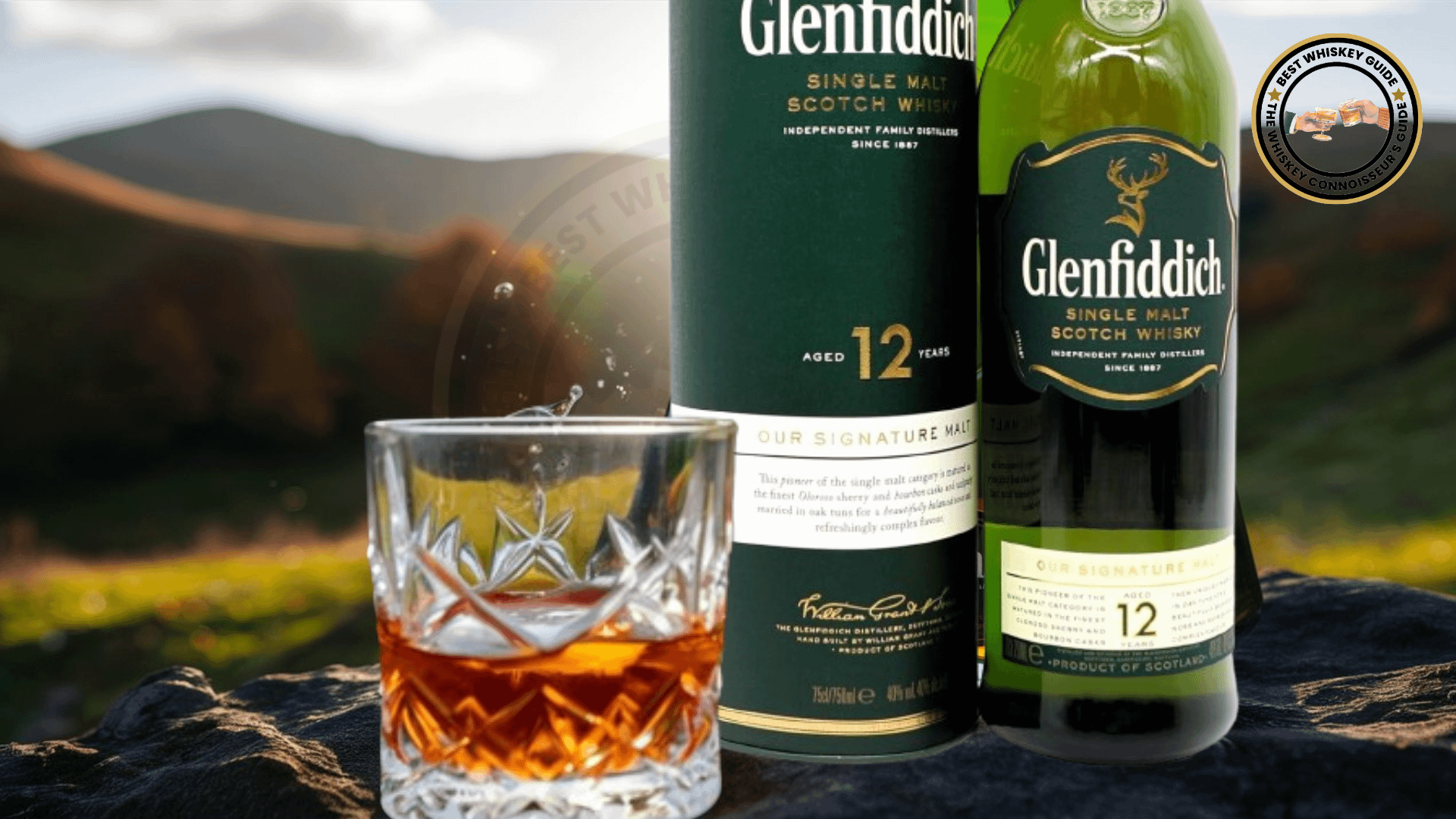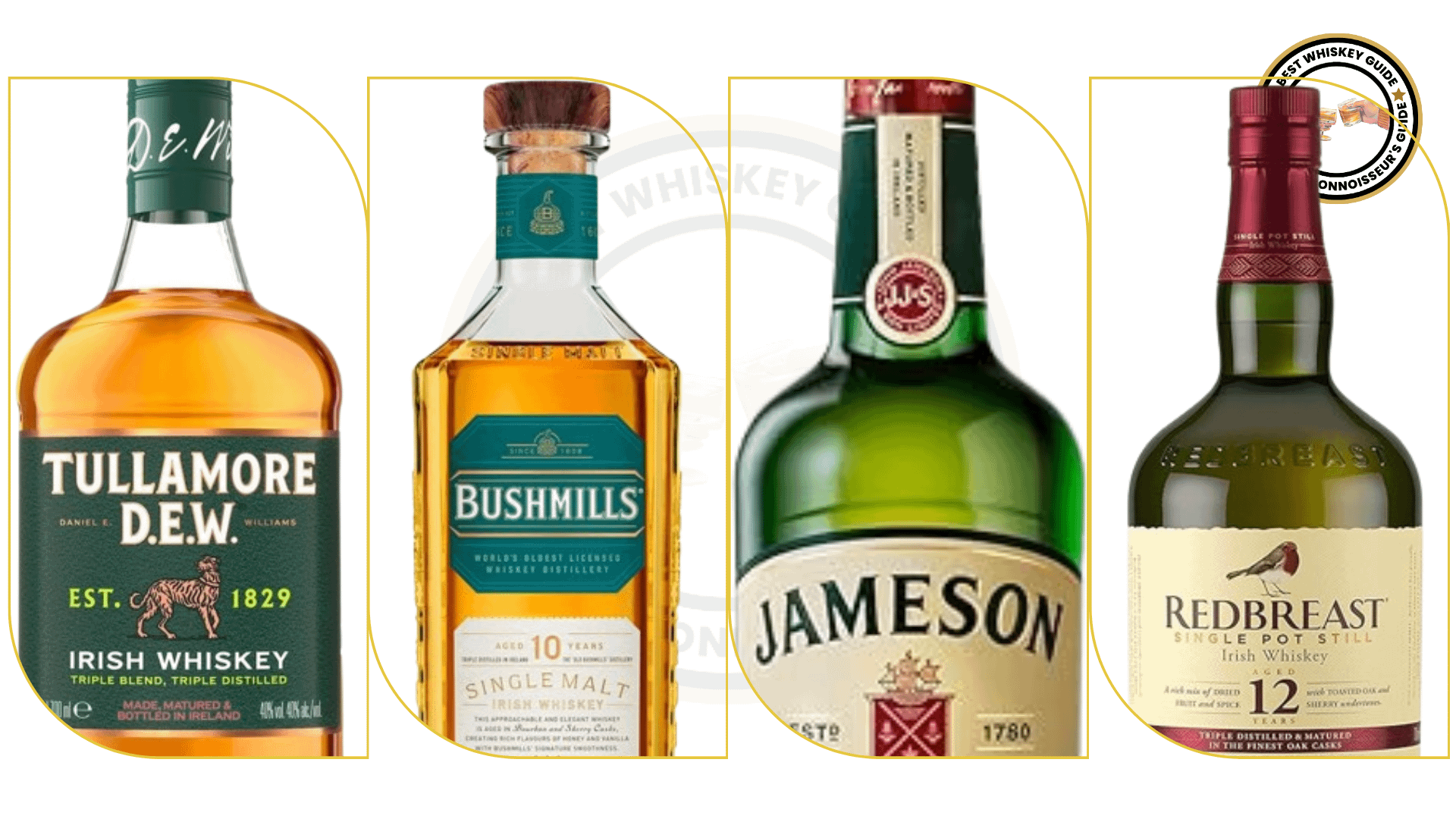As a whiskey lover, I’m always excited to dive into the rich world of Kentucky whiskey. This iconic American spirit has captivated connoisseurs and casual drinkers alike with its bold flavours, smooth finish, and fascinating history. Join me on a journey through the heart of bourbon country as we explore what makes Kentucky whiskey truly special.
Table of Contents
What Sets Kentucky Whiskey Apart?
Kentucky whiskey, often called bourbon, is a type of American whiskey that must be produced in Kentucky. To be legally called Kentucky whiskey, the spirit must meet the following criteria[^1]:
- Made from a grain mixture (mash bill) that is at least 51% corn
- Aged in new, charred oak barrels
- Distilled to no more than 160 proof (80% alcohol by volume)
- Entered into the barrel for ageing at no more than 125 proof (62.5% alcohol by volume)
- Bottled at 80 proof (40% alcohol by volume) or higher
But what truly sets Kentucky whiskey apart is the state’s unique terroir:
- Climate: Kentucky’s hot summers and cold winters create the perfect environment for ageing whiskey, causing the barrels to expand and contract, imparting rich flavours and colours [^2].
- Water: The state’s limestone-filtered water is naturally iron-free and calcium-rich, ideal for crafting smooth, flavorful whiskey[^3].
- Tradition: Kentucky’s whiskey-making heritage dates back centuries, with techniques and recipes passed down through generations of skilled distillers[^4].
These factors combine to create a distinctly Kentucky spirit, with a character that can’t be replicated anywhere else in the world.

A Deep Dive into Kentucky Whiskey’s History
The origins of Kentucky whiskey can be traced back to the late 18th century when settlers, primarily of Scots-Irish descent, began distilling whiskey in the region[^5]. These early pioneers brought their whiskey-making traditions with them, adapting their recipes to incorporate the abundant corn crops of the Kentucky frontier.
As the story goes, Baptist minister Elijah Craig is often credited with pioneering the charred oak barrel ageing process that gives Kentucky whiskey its distinctive flavour profile[^6]. However, the true history is likely more complex, with the spirit evolving through the contributions of numerous distillers.
Throughout the 19th century, Kentucky whiskey gained popularity and became an important part of the state’s economy. But the industry faced significant challenges, including the Whiskey Rebellion of 1794, when distillers protested a federal excise tax on whiskey[^7], and the temperance movement of the early 20th century, which ultimately led to Prohibition from 1920 to 1933[^8].
Despite these obstacles, Kentucky’s whiskey industry persevered and emerged stronger than ever. Today, 95% of the world’s bourbon is produced in Kentucky, a testament to the state’s enduring legacy as the heart of bourbon country.
For a more in-depth look at the history of Kentucky whiskey, check out The Bourbon Whisperer: A Comprehensive Guide to Bourbon Tasting, Collecting, and Mastery Hardcover – 23 Jun. 2023
The Rise of Iconic Kentucky Distilleries
Many of today’s most renowned Kentucky whiskey brands have deep roots in the state’s history. For example:
- Buffalo Trace: Originally known as the George T. Stagg Distillery, this iconic brand dates back to 1773, making it one of the oldest continuously operating distilleries in the United States[^9].
- Maker’s Mark: Founded in 1953 by Bill Samuels Sr., who created the brand’s signature wheat bourbon recipe and hand-dipped red wax seal[^10].
- Jim Beam: Established in 1795 by Jacob Beam, this family-owned distillery has been passed down through seven generations of master distillers[^11].
These historic distilleries, along with many others like Four Roses, have played a crucial role in shaping the story of Kentucky whiskey and cementing the state’s status as the birthplace of bourbon.

The Art and Science of Distillation
Crafting Kentucky whiskey is a time-honoured tradition that requires a delicate balance of art and science. I had the privilege of speaking with a renowned master distiller, who shared insights into the meticulous process:
- Milling: The carefully selected grains (corn, rye, wheat, and/or malted barley) are ground into a fine meal, ensuring optimal extraction of flavours during cooking.
- Mashing: The milled grains are mixed with Kentucky’s iron-free, calcium-rich water to create a mash, which is then cooked to convert the starches into fermentable sugars.
- Fermentation: A proprietary strain of yeast is added to the cooled mash, converting the sugars into alcohol over several days, and developing unique flavour compounds.
- Distillation: The fermented mash (now called distiller’s beer) is double-distilled in copper stills, separating the alcohol from the water and other impurities, resulting in a clear, high-proof spirit.
- Ageing: The heart of the distillate is placed in new, heavily charred American white oak barrels for ageing. As the whiskey interacts with the wood over the years, it develops its characteristic amber colour and complex flavour profile, shaped by Kentucky’s distinct climate.
- Bottling: After ageing (typically for at least four years), the whiskey is carefully blended, diluted with limestone-filtered water to its desired proof, and bottled for enjoyment.
This process, honed over centuries and passed down through generations, is what gives Kentucky whiskey its unparalleled character and depth of flavour.
For a more technical look at the distillation process, visit Our article about how whiskey is made.
Notable Kentucky Whiskey Brands and Styles
Kentucky is home to numerous renowned whiskey brands, each with its unique history, mashbills, and flavour profiles. Some notable examples include:
- Bourbon:
- Buffalo Trace: Known for its smooth, complex bourbons and experimental releases.
- Maker’s Mark: Famous for its wheated bourbon recipe and iconic red wax-dipped bottles.
- Jim Beam: One of the world’s best-selling bourbon brands, offering a range of expressions from traditional to innovative.
- Woodford Reserve: A premium bourbon brand that combines historic craftsmanship with modern techniques.
- Four Roses: Produces a variety of bourbons using two mashbills and five proprietary yeast strains.
- Wild Turkey: Known for its robust, spicy bourbons, often bottled at higher proofs.
- Heaven Hill: Produces a wide range of bourbons, including Elijah Craig, Evan Williams, and Henry McKenna.
- Rye Whiskey:
- Pikesville Rye: A bold, spicy rye whiskey aged for a minimum of six years.
- Rabbit Hole Boxergrail: A high-rye whiskey crafted with a unique blend of malted grains.
- Michter’s US*1 Kentucky Straight Rye: A small-batch rye whiskey with a rich, complex flavour profile.
- Wheated Bourbon:
- Larceny: A smooth, approachable wheated bourbon from Heaven Hill Distillery.
- Old Fitzgerald: A historic wheated bourbon brand known for its 100-proof bottled-in-bond expressions.
- Weller: A highly sought-after wheated bourbon line from Buffalo Trace Distillery.
| Brand | Flagship Expression | Mashbill | Proof | Tasting Notes |
|---|---|---|---|---|
| Buffalo Trace | Buffalo Trace Kentucky Straight Bourbon | Mash Bill #1 (low rye) | 90 | Vanilla, caramel, spice |
| Maker’s Mark | Maker’s Mark Kentucky Straight Bourbon | Wheated (no rye) | 90 | Caramel, vanilla, fruity |
| Jim Beam | Jim Beam White Label | High rye | 80 | Oaky, spicy, vanilla |
| Woodford Reserve | Woodford Reserve Kentucky Straight Bourbon | 18% rye | 90.4 | Cinnamon, orange peel, cocoa |
| Four Roses | Four Roses Small Batch | A blend of mash bills and yeast strains | Fruity, spicy, rich | |
| Wild Turkey | Wild Turkey 101 | High rye | 101 | Spicy, bold, vanilla |
| Heaven Hill | Elijah Craig Small Batch | 12% rye | 94 | Vanilla, oak, caramel |
| Pikesville Rye | Pikesville Straight Rye | Rye | 110 | Spicy, bold, oak |

The Significance of Bottled-in-Bond
The Bottled-in-Bond Act of 1897 was a significant milestone in the history of American whiskey[^12]. To be labelled as bottled-in-bond, a whiskey must meet the following criteria:
- Produced by a single distiller at a single distillery within a single distilling season
- Aged in a federally bonded warehouse for at least four years
- Bottled at 100 proof (50% alcohol by volume)
This designation was created to ensure the quality and authenticity of American whiskey at a time when adulteration and counterfeit products were common. Today, many Kentucky distilleries continue to produce bottled-in-bond expressions as a nod to the state’s rich whiskey-making heritage.
Top 5 Kentucky Bourbons Under $50
While Kentucky is home to many premium and rare bourbons, there are also plenty of excellent options available at a more accessible price point. Here are my top 5 picks for Kentucky bourbons under $50:
- Wild Turkey 101: A bold, spicy bourbon with notes of vanilla, caramel, and oak.
- Elijah Craig Small Batch: A smooth, well-balanced bourbon with flavours of vanilla, caramel, and a hint of spice.
- Four Roses Small Batch: A fruity, mellow bourbon with notes of ripe berries, vanilla, and a touch of oak.
- Evan Williams Single Barrel: A rich, complex bourbon with flavours of vanilla, oak, and dark fruit.
- Old Grand-Dad Bottled-in-Bond: A high-rye bourbon with a spicy, bold flavour profile and notes of caramel and vanilla.
Affordable Kentucky Bourbons: Best Under £30
For those looking to enjoy the flavours of Kentucky bourbon without breaking the bank, here are some excellent options under £30:
- Evan Williams Black Label: A smooth, easy-drinking bourbon with notes of caramel, vanilla, and a touch of oak.
- Jim Beam White Label: A classic, affordable bourbon with flavours of oak, spice, and vanilla.
- Heaven Hill Green Label: A well-balanced bourbon with notes of caramel, vanilla, and a hint of spice.
- Very Old Barton Bottled-in-Bond: A high-proof, spicy bourbon with flavours of caramel, oak, and a touch of fruit.
- Old Forester 86 Proof: A rich, full-bodied bourbon with notes of vanilla, caramel, and a hint of dark fruit.

Must-Visit Kentucky Whiskey Distilleries
No trip to Kentucky is complete without visiting some of the state’s iconic whiskey distilleries. Here are a few must-visit destinations for any bourbon lover:
- Buffalo Trace Distillery: Home to some of the most sought-after bourbons in the world, including Pappy Van Winkle and Antique Collection.
- Maker’s Mark Distillery: Known for its picturesque campus and iconic red wax-dipped bottles.
- Woodford Reserve Distillery: A National Historic Landmark that offers a unique and immersive bourbon experience.
- Jim Beam American Stillhouse: The birthplace of the world’s best-selling bourbon, offering tours and tastings.
- Heaven Hill Bourbon Experience: A state-of-the-art visitor center showcasing the history and craftsmanship of Heaven Hill’s diverse bourbon portfolio.
For more information on planning your Kentucky bourbon journey, visit the official Kentucky Bourbon Trail website.
Visiting Kentucky Distilleries: Top Experiences
When visiting Kentucky’s iconic distilleries, be sure to take advantage of these unique experiences:
- Behind-the-Scenes Tours: Many distilleries offer in-depth tours that showcase the entire whiskey-making process, from grain to glass. These tours often include exclusive access to restricted areas and the opportunity to meet master distillers.
- Barrel Picks: Some distilleries allow visitors to select their barrel of bourbon, which is then bottled and sold exclusively to the individual or group. This is a rare opportunity to taste and purchase a truly one-of-a-kind whiskey.
- Cocktail Classes: Several distilleries offer cocktail classes where visitors can learn to make classic bourbon cocktails from expert mixologists. These hands-on experiences are a fun way to explore the versatility of Kentucky whiskey.
- Whiskey Pairing Dinners: A few distilleries partner with local restaurants to offer exclusive whiskey-pairing dinners. These multi-course meals showcase the culinary potential of bourbon and provide a unique dining experience.
- Vintage Whiskey Tastings: Some distilleries offer tastings of rare, vintage whiskeys from their archives. These experiences provide a glimpse into the history and evolution of Kentucky bourbon and are a must for serious whiskey collectors.

Enjoying Kentucky Whiskey: Neat, On the Rocks, or in Cocktails
The beauty of Kentucky whiskey lies in its versatility. Whether you prefer it neat, on the rocks, or as the star of a classic cocktail, there’s no wrong way to enjoy this exquisite spirit:
- Neat: Pour a 1.5-2 oz serving into a Glencairn glass or tumbler and savour the whiskey’s aroma and flavour without any additions. This allows you to fully appreciate the whiskey’s unique character.
- On the Rocks: Add a large ice cube or a few smaller cubes to your whiskey to chill and slightly dilute it. This can help mellow out higher-proof whiskeys and reveal new flavour nuances.
- In a Cocktail: Kentucky whiskey shines in classic cocktails like the Old Fashioned, Manhattan, or Mint Julep. The spirit’s bold flavours and smooth finish make it the perfect foundation for a wide range of delicious drinks.
For more Kentucky whiskey cocktail recipes, check out our article on 20 Best Bourbon Cocktails.
Kentucky Whiskey vs. Tennessee Whiskey
While both Kentucky whiskey and Tennessee whiskey are types of American whiskey made primarily from corn, there are some key differences:
- Location: Kentucky whiskey must be made in Kentucky, while Tennessee whiskey must be made in Tennessee.
- Filtration: Tennessee whiskey undergoes an additional charcoal filtration process called the Lincoln County Process, which mellows the whiskey and imparts a distinct flavour [^13].
- Flavour Profile: Due to the differences in production and ageing, Tennessee whiskey tends to have a smoother, slightly sweeter flavour compared to the bolder, spicier notes often found in Kentucky bourbon.
To learn more about the differences between these two iconic American whiskeys, read our in-depth comparison of whiskey and bourbon.
Food Pairings
Kentucky whiskey’s rich, complex flavors make it an excellent companion to a variety of foods:
- Grilled Meats: The smoky, caramelized notes in bourbon pair wonderfully with grilled steak, pork, or chicken.
- BBQ: The sweet, spicy flavors of barbecue are a natural match for Kentucky whiskey’s bold character.
- Chocolate Desserts: The whiskey’s notes of vanilla, caramel, and oak complement rich chocolate desserts like brownies or chocolate truffles.
- Aged Cheeses: The sharp, nutty flavors of aged cheddar, gouda, or parmesan create a delightful contrast with the whiskey’s smooth, slightly sweet profile.
For more bourbon and food pairing ideas, visit The Bourbon Review’s guide to pairing bourbon with food.
Glossary of Common Whiskey Terms
- Mash Bill: The mixture of grains used to make a whiskey, typically expressed as percentages (e.g., 75% corn, 15% rye, 10% malted barley).
- Proof: A measure of a whiskey’s alcohol content. In the U.S., proof is twice the percentage of alcohol by volume (ABV). For example, a 100-proof whiskey is 50% ABV.
- Straight Whiskey: A whiskey that has been aged for at least two years and has not been blended with any other spirits or additives.
- Sour Mash: A fermentation process in which a portion of the previous batch’s mash is used to start the next batch, ensuring consistency in flavor from batch to batch.
- Angel’s Share: The portion of whiskey that evaporates from the barrel during aging, typically around 2-4% per year.
- Charr: The process of burning the inside of a new oak barrel to caramelize the wood sugars and create a layer of charcoal, which filters and flavors the whiskey as it ages.
For a more comprehensive list of whiskey terminology, check out Whisky Advocate’s glossary of whisky terms.
Conclusion
Kentucky whiskey is a testament to the state’s rich history, unique terroir, and the skill of its master distillers. From the early days of settlers crafting whiskey on the frontier to the thriving bourbon industry of today, Kentucky has always been at the heart of American whiskey-making.
As you explore the diverse and exciting world of Kentucky whiskey, I hope this guide has provided you with a deeper understanding and appreciation for this remarkable spirit. Whether you’re a seasoned connoisseur or a curious newcomer, there’s never been a better time to discover the bold flavors and enduring legacy of Kentucky whiskey. Cheers!
Sources:
[^1]: “27 CFR § 5.22 – The standards of identity.” Legal Information Institute, Cornell Law School, https://www.law.cornell.edu/cfr/text/27/5.22.
[^2]: Lew Bryson. “The Impact of Weather on Bourbon.” Bourbon+, 24 Sept. 2020, https://bourbonplus.com/the-impact-of-weather-on-bourbon/.
[^3]: “The Role of Water in Making Whiskey.” Whisky Advocate, 11 Nov. 2020, https://www.whiskyadvocate.com/the-role-of-water-in-making-whiskey/.
[^4]: “Kentucky Bourbon History.” Kentucky Bourbon Trail, https://kybourbontrail.com/history/.
[^5]: Mike Veach. “The Scots-Irish Influence on Whiskey in Kentucky.” Bourbon Veach, 28 Sept. 2017, https://bourbonveach.com/2017/09/28/the-scots-irish-influence-on-whiskey-in-kentucky/.
[^6]: Jimmy Russell and Fred Noe. “The Founding Fathers of Bourbon.” Bourbon Heritage Center, 9 Oct. 2019, https://www.bourbonheritage.com/blog/the-founding-fathers-of-bourbon.
[^7]: “The Whiskey Rebellion.” George Washington’s Mount Vernon, https://www.mountvernon.org/library/digitalhistory/digital-encyclopedia/article/whiskey-rebellion/.
[^8]: “Prohibition and the Bourbon Industry.” The Bourbon Review, 24 Aug. 2020, https://www.gobourbon.com/prohibition-and-the-bourbon-industry/.
[^9]: “Our History.” Buffalo Trace Distillery, https://www.buffalotracedistillery.com/our-history/.
[^10]: “Our Story.” Maker’s Mark, https://www.makersmark.com/our-story.
[^11]: “Our History.” Jim Beam, https://www.jimbeam.com/en-us/our-history.
[^12]: “Bottled-in-Bond Act of 1897.” The Whiskey Wash, 14 Mar. 2017, https://thewhiskeywash.com/whiskey-styles/american-whiskey/bottled-bond-act-1897/.
[^13]: “What Is the Lincoln County Process?” The Spruce Eats, 20 Jan. 2021, https://www.thespruceeats.com/lincoln-county-process-760297.





Leave a Reply